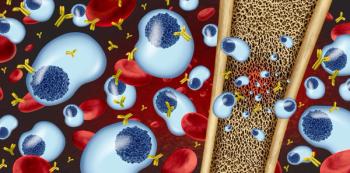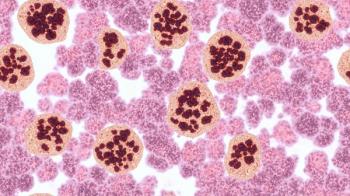
- March 2021
- Volume 89
- Issue 03
340B Assists Patients and Institutions
How much does this federal program affect the success of the health care parties involved?
Congress enacted section 340B of the Public Health Service Act in 1992, 2 years after the Medicaid Drug Rebate Program of 1990, which ensured eligible state facilities received drug products at the lowest price possible.
In 1992, Congress extended this relief beyond just Medicaid patients to any eligible health care facility treating a large volume of low-income patients.1 Low income is loosely defined. In some contracts, it is based on a variation of income threshold compared with the federal poverty line.2 Covered entities (CEs), also known as safety net facilities, must meet certain criteria to be eligible for these drastic discounts from manufacturers. Requirements include but are not limited to being operated and/or owned by the federal or state government or a private or public nonprofit organization. In 1992, hospital participation in the program was low, at just 45 facilities. In 2010, Congress expanded the program to cancer centers, rural hospitals, and rural referral centers (disproportionate share adjustment percentage greater than 8%), dramatically expanding participation. By December 2020, the number of CEs, according to the Health Resources and Services Administration, was 69,365.
Of all the parties involved in health care—community pharmacies, hospitals, insurance companies, manufacturers, patients, etc—which parties support this program? Believe it or not, insurance companies and patients see little to no change in pricing. This program is strictly between CEs and manufacturers. Patients’ co-payment do not change, and insurance underwriters are billed the same amount.
The process looks like this: Manufacturers discount a medication significantly, and the hospital then bills the insurance for the full price of the medication, maximizing their revenue on that 1 transaction. However, 340B claims cannot be explained simply by looking at 1 transaction. The next patient who is treated may come in requiring the same treatment, without insurance. In this situation, hospitals would treat the patient equally and absorb the costs. It is important to realize that most of these CEs are nonprofit and, at the end of the day, their ethical decision to take the loss on treating a patient without insurance is covered with previous encounters that earned them revenue.
Why would the manufacturers participate in this? Manufacturers do benefit. To have their drug on the Medicaid formulary, they also must participate in the 340B program. Not participating in these programs would limit access to their medication by the Medicaid population. In some socioeconomic areas, Medicaid may be the predominant insurance, affecting many patients. Unlike some of the CEs discussed previously, drug manufacturers are profitable businesses, and they constantly try to minimize the number of eligible 340B claims to maximize their bottom dollar. But let’s not overlook the fact that these companies profit trillions of dollars. 340B claims only consist of 8% of the US drug market; 92% of the claims are not granted this program relief.3 The drug industry is not hurting. The 340B program is not as detrimental to the drug manufacturers as it is vital to the health care facilities that rely on it.
The 340B program is not perfect; a lot of details are constant topics of debate. To be transparent, some recent controversies with this program include contract pharmacies. A contract pharmacy is an “outside” pharmacy that is in a voluntary agreement with a CE to gain access to affordable medications for 340B eligible patients. This expands the CE’s revenue for providing health care services to patients because they obtain their prescriptions at outside pharmacies. This allows community pharmacies to get 340B pricing through CEs for eligible patients and results in splitting profits with the CE. This is controversial because community pharmacies are profiting when using this relief program that was initially designed for nonprofit facilities. Community pharmacies do profit from these contracts, but it is important to understand that through this process, CEs are increasing the revenue generated for providing care to patients, who in hindsight may not have been able to receive care with- out the program’s support.
In 2010, an edit was made to allow CEs to increase the number of contract pharmacies from 1 per CE to unlimited. Since then, the number of contract pharmacies has increased by 4000%.4 As of December 2, 2020, there were 189,920 contract pharmacies and 69,365 CEs. That means, on average, each CE has 2.74 contract pharmacies. Some CEs have agreements with upward of 400 contract pharmacies. Manufacturers are not supportive of this concept. They see it as giving discounted drugs to community pharmacies that typically would pay full price.
REFERENCES
- Overview of the 340B drug pricing program. 340B Health. Accessed December 3, 2020. https://www.340bhealth.org/members/340b-program/overview/
- United States Government Accountability Office. 340B drug discount program. December 2019. Accessed February 11, 2021. https://www.gao.gov/assets/710/703128.pdf
- Fein AJ. 340B program purchases reach $24.3 billion—7%+ of the pharma market—as hospitals’ charity care flatlines (rerun). Drug Channels. August 30, 2019. Accessed December 3, 2020. https://www.drugchannels.net/2019/08/340b-program-purchases-reach-243.html
- PhRMA. 340B contract pharmacy 101. September 2020. Accessed February 11, 2021. https://www.phrma.org/-/media/Project/PhRMA/PhRMA-Org/PhRMA-Org/PDF/0-9/340B-Contract-Pharmacy-101-Deck_Sept-2020.pdf
Articles in this issue
over 4 years ago
Gavreto From Blueprint Medicines Corporationover 4 years ago
March 2021 Pet Peevesover 4 years ago
Interactives Case Studies (March 2021)over 4 years ago
OTC Cases: March 2021 PT Retailover 4 years ago
Another Pandemic Rages on Beyond Our Consciousnessover 4 years ago
Pharmacists Play a Key Role in Mental Healthover 4 years ago
Psychiatric Pharmacy Involves Advanced Clinical Trainingover 4 years ago
Rx Product News: March 2021over 4 years ago
Generic Product News: March PT Retail 2021Newsletter
Stay informed on drug updates, treatment guidelines, and pharmacy practice trends—subscribe to Pharmacy Times for weekly clinical insights.




















































































































































































































